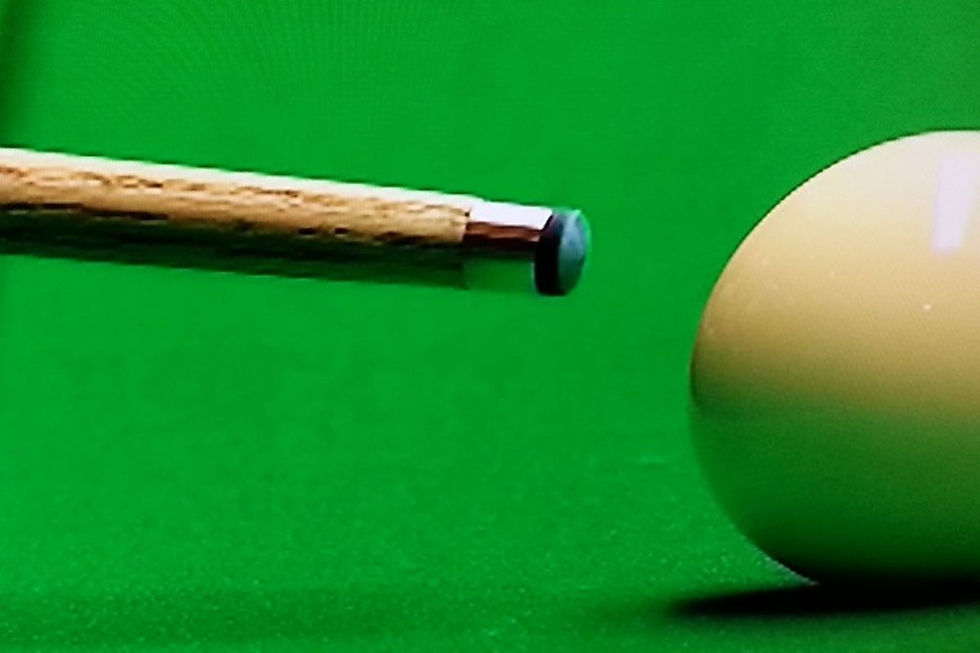Best Snooker Drills for Practice: Effective Drills to Improve Snooker Skills
- Anton Kastner
- Oct 8, 2024
- 4 min read

Snooker is a game that requires a unique blend of skill, precision, and mental acuity. Whether you’re a beginner looking to get started or an advanced player aiming to refine your technique, incorporating structured snooker drills into your practice routine is essential. In this article, we’ll explore some of the best snooker drills designed to enhance your skills and elevate your game.
Why Snooker Drills Matter
Before diving into specific drills, it's essential to understand why they are crucial for improvement. Practicing with purpose helps you develop muscle memory, refine your technique, and build confidence. Effective drills focus on various aspects of the game, including shot accuracy, cue ball control, and overall strategic play. By regularly incorporating these drills into your practice sessions, you can systematically enhance your snooker skills.
Top Snooker Drills for Effective Practice
1. The Straight Line Drill
Objective: Improve shot accuracy and consistency.
How to Execute:
Place five balls in a straight line along the baulk line, approximately six to eight inches apart.
Stand at the opposite end of the table, aiming to pot each ball in succession.
Focus on keeping your cue straight and ensuring a smooth follow-through.
Tip: This drill helps reinforce proper cue action and shot alignment. If you miss a shot, take note of what went wrong and adjust accordingly.
2. The 12-Ball Potting Drill
Objective: Enhance your potting skills from different positions.
How to Execute:
Set up 12 balls in various positions around the table. Try to place them in a way that reflects real-game scenarios.
Take turns potting each ball in sequence, aiming to minimize your shots.
Tip: This drill not only helps with potting but also encourages you to think strategically about your next shot. Focus on positioning the cue ball for the best follow-up shot.
3. The Cue Ball Control Drill
Objective: Develop cue ball control and positional play.
How to Execute:
Place the cue ball in various positions around the table, ideally in spots where you would typically find it after a shot.
Practice making specific shots while controlling where the cue ball ends up.
For instance, aim to pot a red ball while ensuring the cue ball lands in a particular area for your next shot.
Tip: Use this drill to experiment with different types of spin (topspin, backspin, and side spin) to see how it affects the cue ball’s trajectory.
4. The Break-off Drill
Objective: Master the break-off shot.
How to Execute:
Set up the balls in the traditional triangle formation.
Practice your break-off shot repeatedly, focusing on how you strike the cue ball to achieve maximum spread.
Aim to pot at least one ball during each break.
Tip: Pay attention to your stance, grip, and follow-through. Adjust your technique until you achieve consistent results.
5. The Color Sequence Drill
Objective: Improve your game strategy and potting sequence.
How to Execute:
Arrange the colored balls in their respective spots on the table.
Start with the yellow and work your way through the colors in the following order: green, brown, blue, pink, and black.
Pot each ball in sequence, focusing on the correct shot selection and positioning for the next ball.
Tip: This drill simulates real-game scenarios, helping you become comfortable with the flow of a typical frame.
6. The Safety Shot Drill
Objective: Enhance your tactical play and safety shots.
How to Execute:
Place one or more balls in the “D” area.
Practice making safety shots, aiming to leave the cue ball in a challenging position for your opponent.
Focus on positioning and controlling the cue ball’s movement.
Tip: Evaluate your shots based on how difficult you make it for your opponent. This will help you develop a more strategic approach to the game.
7. The One-Handed Drill
Objective: Develop grip strength and control.
How to Execute:
Using your non-dominant hand, practice taking shots from various positions around the table.
Focus on maintaining a straight cue action and consistent follow-through.
Tip: This drill not only improves your off-hand skills but also enhances your overall control of the cue.
Integrating Drills into Your Practice Routine
To maximize your improvement, consider the following tips when integrating snooker drills into your practice sessions:
1. Set Specific Goals
Before starting your practice, define what you want to achieve. Whether it’s improving your potting accuracy or mastering cue ball control, having a clear goal will help you stay focused.
2. Track Your Progress
Keep a journal to note your practice sessions, including drills completed and any challenges faced. Monitoring your progress can help you identify areas that need more attention.
3. Mix It Up
Variety is key. Rotate through different drills to keep your practice sessions engaging and comprehensive. This will help you cover all aspects of the game while avoiding burnout.
4. Practice with a Partner
Whenever possible, practice with a partner. This not only makes drills more enjoyable but also allows you to simulate real-game scenarios, helping you develop strategic thinking and adaptability.
5. Stay Patient and Persistent
Improvement in snooker takes time and consistent effort. Don’t get discouraged by setbacks. Instead, view them as opportunities to learn and grow.
Incorporating effective snooker drills into your practice routine is a game-changing strategy for improving your skills. From enhancing your potting accuracy to mastering cue ball control and tactical play, these drills provide a structured approach to elevating your game. By setting specific goals, tracking your progress, and practicing with a partner, you can maximize your training sessions. Remember, patience and persistence are key; with dedicated practice, you'll find yourself becoming a more confident and skilled snooker player. So grab your cue, hit the table, and start working on these drills today!


Comments